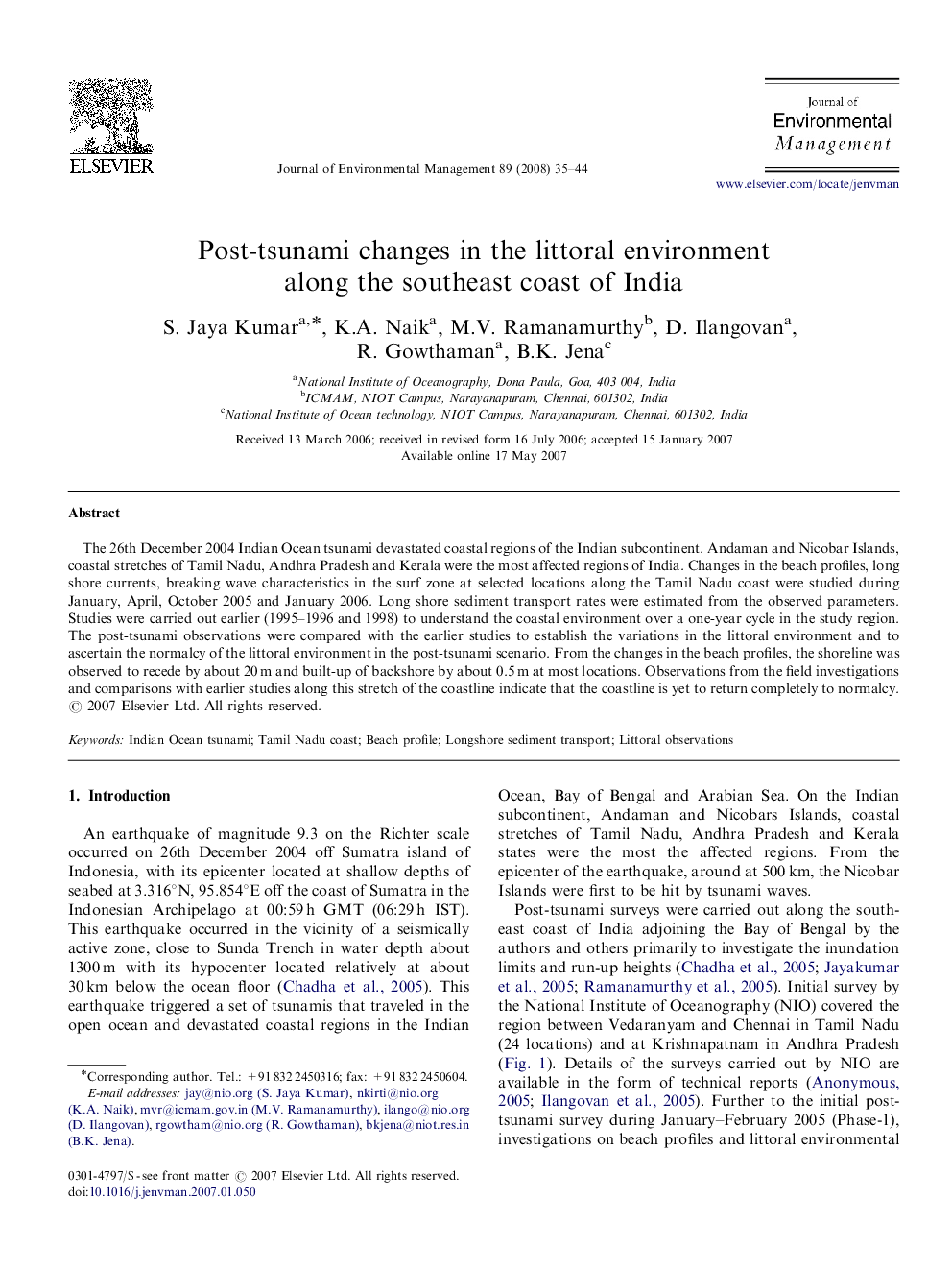| Article ID | Journal | Published Year | Pages | File Type |
|---|---|---|---|---|
| 1057719 | Journal of Environmental Management | 2008 | 10 Pages |
The 26th December 2004 Indian Ocean tsunami devastated coastal regions of the Indian subcontinent. Andaman and Nicobar Islands, coastal stretches of Tamil Nadu, Andhra Pradesh and Kerala were the most affected regions of India. Changes in the beach profiles, long shore currents, breaking wave characteristics in the surf zone at selected locations along the Tamil Nadu coast were studied during January, April, October 2005 and January 2006. Long shore sediment transport rates were estimated from the observed parameters. Studies were carried out earlier (1995–1996 and 1998) to understand the coastal environment over a one-year cycle in the study region. The post-tsunami observations were compared with the earlier studies to establish the variations in the littoral environment and to ascertain the normalcy of the littoral environment in the post-tsunami scenario. From the changes in the beach profiles, the shoreline was observed to recede by about 20 m and built-up of backshore by about 0.5 m at most locations. Observations from the field investigations and comparisons with earlier studies along this stretch of the coastline indicate that the coastline is yet to return completely to normalcy.
